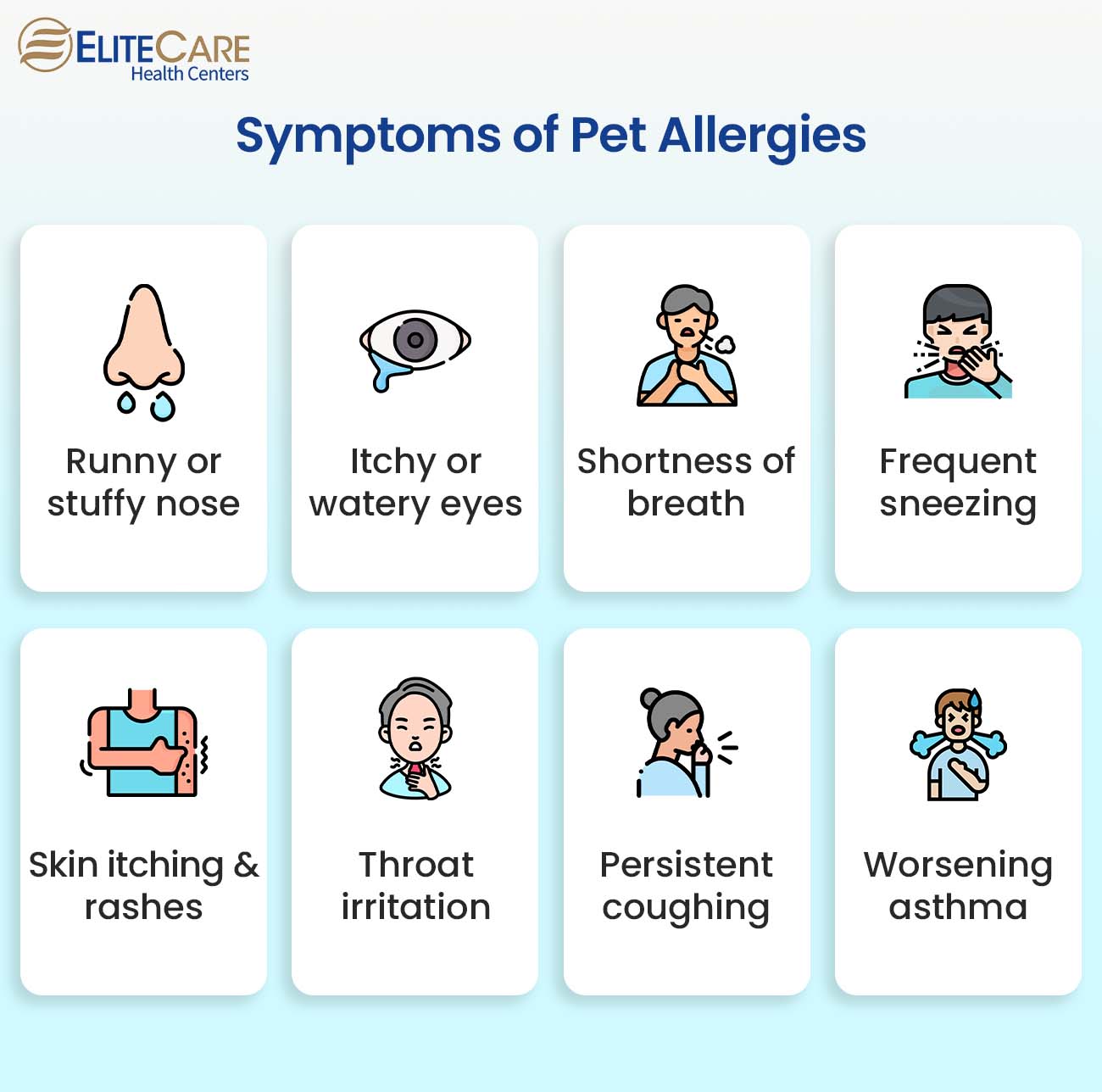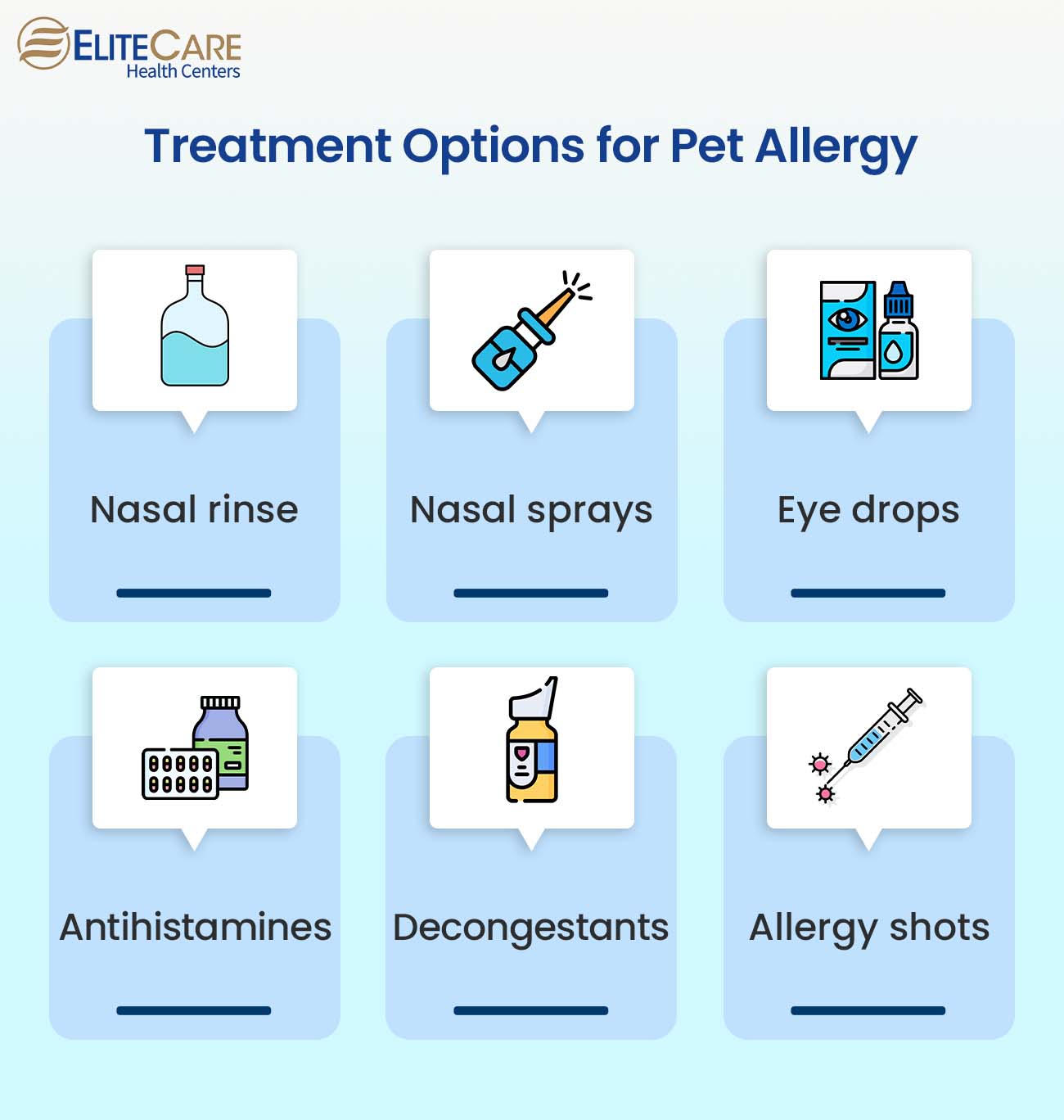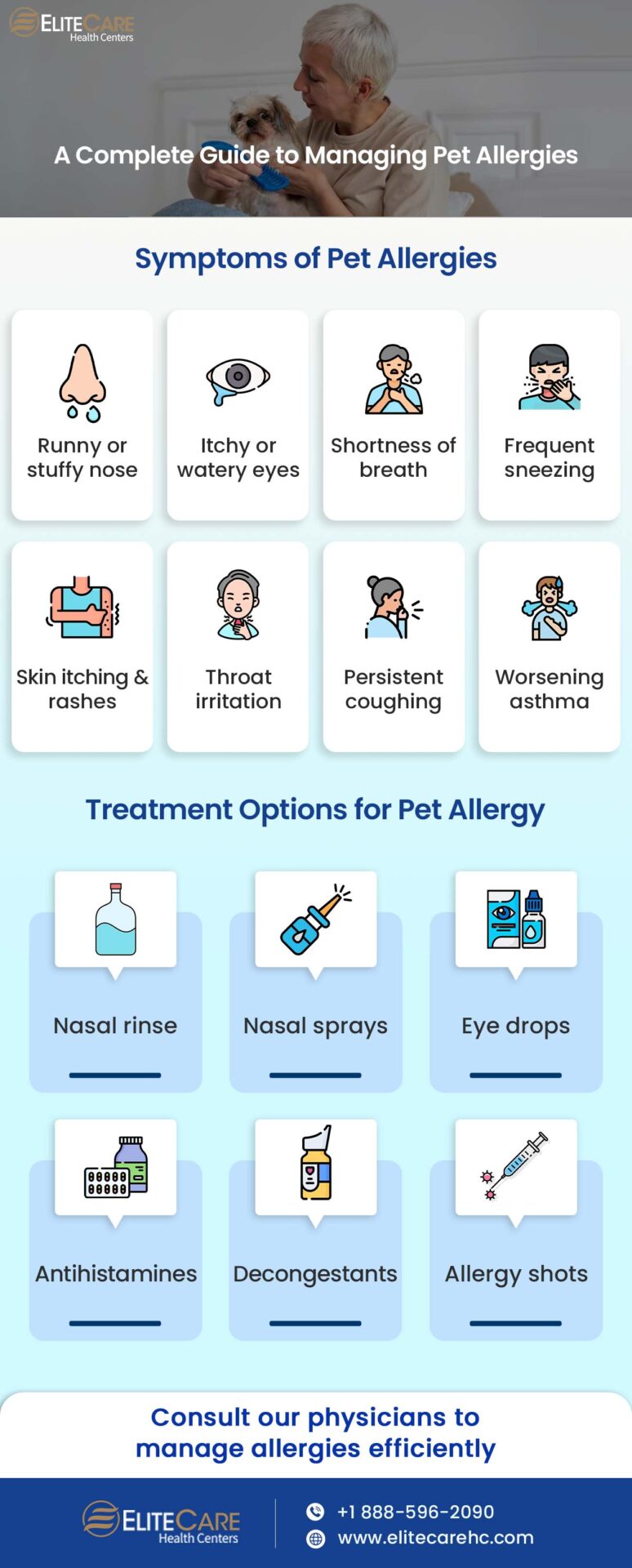
Allergic reactions occur when our bodies identify a foreign substance or allergen and trigger our immune system to release chemicals to fight against it. The specific proteins found in various parts of pets, such as their fur, skin, urine, saliva, or even pet dander, can act as allergens. In most cases, these proteins are typically harmless. However, for individuals with pet allergies, their immune system perceives these proteins as potential threats and causes an allergic reaction.
What Are Some Common Pet Allergies?
All pets have the potential to generate allergens, but the primary sources of pet allergens are typically cats and dogs. Other pets that can also trigger allergies are as follows:
- Rabbits
- Rodents, including rats, mice, hamsters, gerbils, and guinea pigs
- Birds
- Horses
What Causes Pet Allergies?
Initial exposure to a pet allergen prompts our body to produce immunoglobulin E (IgE) – an antibody produced by our immune system. Each IgE type is sensitive to a particular pet allergen or other allergenic substances.
These antibodies locate allergens within the body and transport them to mast cells or allergy cells, where they bind to specialized receptors. This binding process triggers the release of histamine, which is responsible for causing allergy symptoms.
What Are the Common Symptoms of Pet Allergies?

For every individual, the timing of symptoms varies depending on the severity of their pet allergies.
Those with severe pet allergies may experience initial symptoms within 15-30 minutes of coming into contact with a pet. On the other hand, individuals with mild pet allergies may experience the symptoms several hours to a few days after being exposed to a pet.
The following are some common symptoms of pet allergies:
- Inflammation of nasal passages, leading to a runny or stuffy nose
- Itchy or watery eyes
- Shortness of breath.
- Frequent sneezing
- Skin itching
- Irritation in the throat or mouth
- Persistent coughing
- Development of hives
- Elevated asthma symptoms
The symptoms of pet allergies may overlap with other conditions, such as the flu or the common cold. Therefore, it is best to consult a primary care physician to identify the root cause of these symptoms.
Can Pet Allergies Be Life-Threatening?
Although rare, those with pet allergies may sometimes experience an anaphylactic reaction, which can be life-threatening. Seek immediate medical assistance if individuals exhibit the following symptoms:
- Trouble breathing.
- Swelling in the throat
- Dizziness
- A hoarse voice
- Development of rashes
- Abdominal discomfort
- Nausea or vomiting
- Diarrhea
- Rapid heartbeat
Treatment Options for Pet Allergies

1. Nasal rinse
Healthcare providers may use a saline (saltwater) nasal rinse to reduce mucus production and remove pollen from nasal passages.
2. Nasal sprays
Corticosteroid nasal sprays are effective in targeting swelling and inflammation in nasal passages with minimum to no side effects. Individuals can also consider antihistamine nasal sprays like Astelin and Patanase.
3. Eye drops
Allergy eye drops are highly effective in managing eye allergy symptoms, including sensations of burning, itching, redness, excessive tearing, and swelling.
4. Antihistamines
This over-the-counter medication is available in pills, liquid, or nasal spray. They not only alleviate sneezing and itching in the nose and eyes but also reduce runny nose and nasal congestion.
5. Decongestants
Individuals can obtain decongestants as pills, liquids, nasal sprays, or drops. They can constrict the lining of nasal passages to relieve congestion and are typically used for short durations (usually three days or less).
However, individuals suffering from conditions like high blood pressure, glaucoma, thyroid disorders, or urinary difficulties should consult their primary care physician before using decongestants.
6. Allergy shots
If other treatments and precautions prove ineffective, allergy shots (immunotherapy) can be highly beneficial. In such cases, a healthcare provider administers small amounts of allergens into the skin and closely monitors for symptoms. Over time, physicians increase the allergen dosage, eventually boosting the immune system to tolerate allergens.
In addition to these treatment options, physicians may also prescribe leukotriene modifiers – a medication that can block the release of chemicals that trigger allergic reactions. Different treatment options may produce adverse side effects. Therefore, individuals should always consult a primary care physician before opting for any particular remedies or medications.
How to Reduce the Amount of Pet Allergens in Your Home
Although the best way to prevent pet allergies is to stay away from pets and furry animals, it is not a viable option for everyone. There are various measures one can implement to minimize the presence of pet allergens in their living space, which are as follows:
Restrict your pet's space
Individuals should contain their pets in specific areas within their home, especially avoiding access to bedrooms or kitchens, where allergens can adhere to furniture, bedding, or food items. Ideally, one should keep their pet in an area with hard flooring or use a machine-washable area rug.
Maintain cleanliness
Regularly vacuum the floors and furniture to minimize the presence of pet allergens. Using a lint roller can effectively remove dander from furniture.
Utilize HEPA filters
Use high-efficiency particulate air (HEPA) filters to capture pet dander and other airborne allergens.
Monitor filter maintenance
Replace the filters in the air conditioning and heating systems periodically to reduce the risk of allergen accumulation and enhance air quality.
Change clothes after pet interaction
Individuals should always change clothes after spending time with their pets, particularly if they have been in close contact.
Practice hand hygiene
Wash your hands thoroughly with soap and warm water to remove as much allergens as possible from your skin.
Groom your pet regularly
Do not forget to routinely brush and bathe the pet to minimize dander release into the surrounding environment. If possible, individuals should ask someone else to perform these tasks to limit their exposure to pet allergens.
The Bottom Line
According to researchers, approximately 10% to 20% of the world’s population is allergic to cats and dogs. Although there are no foolproof methods to avoid allergens, it doesn’t necessarily mean one has to get rid of their beloved furry companion to maintain their health. Consult a healthcare provider regarding potential treatments that can reduce symptoms and enhance your overall well-being. With medical assistance and precautionary measures, it is possible to reduce the impact of pet allergies.
For any queries or concerns about pet allergies, contact EliteCare Health Centers, a medical clinic in Florida, and consult a primary care physician. We have multiple healthcare centers across Florida that provide primary and senior care services such as screenings, annual physical exams, venipuncture, vaccination, etc. Schedule an appointment now!






